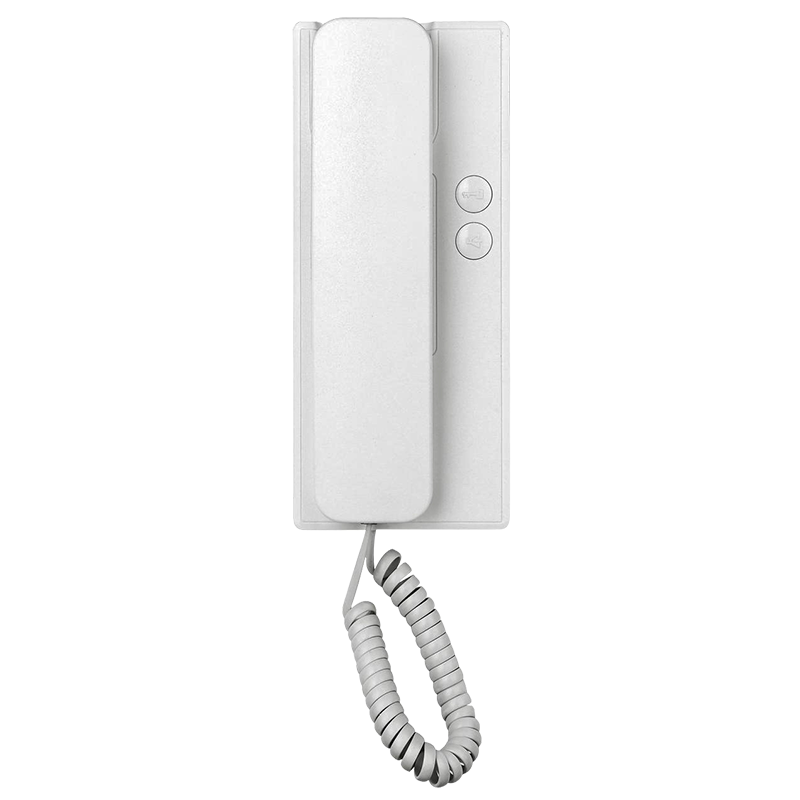Email cannot be empty
Password cannot be empty
Email format error
Email cannot be empty
Email already exists
6-20 characters(letters plus numbers only)
The password is inconsistent
Email format error
Email cannot be empty
Email does not exist
6-20 characters(letters plus numbers only)
The password is inconsistent


In an era where smart home technology dominates, the non-visual intercom doorbell stands out as a privacy-centric solution for modern households. Unlike traditional video doorbells, this innovative device prioritizes audio communication and security without compromising personal privacy. Whether you're concerned about data breaches or simply prefer a minimalist approach to home security, the non-visual intercom doorbell offers a compelling alternative.
This guide explores how these devices work, their advantages over video-enabled counterparts, and why they’re becoming a staple for privacy-conscious homeowners.
How Does a Non-Visual Intercom Doorbell Work?
A non-visual intercom doorbell operates on a simple yet effective principle: audio-based interaction. When a visitor presses the doorbell, the system triggers an audible alert inside the home. The resident can then communicate with the guest via a built-in speaker and microphone, eliminating the need for cameras or video feeds.
Key components include:
● High-sensitivity microphones for clear two-way communication.
● Weather-resistant design to withstand outdoor conditions.
● Integration with smart home systems (e.g., Alexa or Google Home) for remote access.
By focusing solely on audio, the non-visual intercom doorbell reduces vulnerabilities associated with video storage and hacking risks.
Top 5 Benefits of Installing a Non-Visual Intercom Doorbell
Enhanced Privacy Protection
Without cameras, there’s no risk of unauthorized video surveillance or footage misuse. The non-visual intercom doorbell ensures conversations remain confidential.
Reduced Cybersecurity Risks
Video doorbells are frequent targets for hackers. A non-visual intercom doorbell minimizes attack vectors by eliminating video data streams.
Cost-Effective Security
These devices are often more affordable than video models, making them ideal for budget-conscious buyers.
Simpler Compliance with Privacy Laws
In regions with strict data protection regulations (e.g., GDPR), avoiding video collection simplifies legal compliance.
Accessibility for Visually Impaired Users
Audio-focused systems empower individuals who rely on sound for navigation and interaction.
Installation and Setup: A Step-by-Step Guide for Non-Visual Intercom Doorbells
Installing a non-visual intercom doorbell is straightforward. Follow these steps:
Step 1: Choose the Right Location
Mount the device near your main entrance, ensuring the microphone and speaker are within reach of typical visitor height.
Step 2: Connect to Power
Most models are wired, though battery-operated options exist for flexibility.
Step 3: Pair with Smart Home Devices
Use the manufacturer’s app to sync your non-visual intercom doorbell with existing smart home ecosystems.
Step 4: Test Audio Quality
Conduct a trial run with a friend or family member to adjust microphone sensitivity and volume.
Who Should Consider a Non-Visual Intercom Doorbell?
This technology is ideal for:
● Privacy advocates who avoid video surveillance.
● Renters seeking temporary, non-invasive security solutions.
● Elderly or visually impaired individuals who benefit from audio cues.
● Homeowners in low-crime areas where video monitoring feels excessive.
If you value simplicity and discretion, the non-visual intercom doorbell is a perfect fit.
Comparing Non-Visual Intercom Doorbells to Video Doorbells
| Feature | Non-Visual Intercom Doorbell | Video Doorbell |
|---|---|---|
| Privacy | High (no video) | Moderate (video storage) |
| Cost | 50–150 | 100–300+ |
| Data Usage | Minimal (audio-only) | High (video requires bandwidth) |
| Accessibility | Ideal for auditory interaction | Relies on visual engagement |
While video doorbells offer more context, the non-visual intercom doorbell excels in scenarios where privacy and simplicity are paramount.
Future Trends: The Growing Demand for Non-Visual Intercom Doorbells
As smart home technology evolves, demand for privacy-focused devices like the non-visual intercom doorbell is surging. Innovations on the horizon include:
● AI-Powered Voice Recognition: Identifying frequent visitors via voice patterns.
● Solar-Powered Models: Eco-friendly designs for off-grid homes.
● Advanced Encryption: Military-grade security for audio data.
Industry analysts predict a 25% annual growth rate for audio-based security systems by 2026, driven by heightened privacy concerns.
How to Choose the Best Non-Visual Intercom Doorbell for Your Home?
Consider these factors before purchasing:
Top-rated models include the August Audio Doorbell and SadoTech Codeless Entry System.

FAQs About Non-Visual Intercom Doorbells
Q: Can I use a non-visual intercom doorbell in apartments?
A: Yes! Their compact design and easy installation make them ideal for rented spaces.
Q: Do these devices work during power outages?
A: Battery-operated models will function, but wired systems may require a backup power source.
Q: Are non-visual intercom doorbells suitable for businesses?
A: Absolutely—restaurants, offices, and clinics use them to maintain client privacy.
Conclusion: Embrace Privacy with a Non-Visual Intercom Doorbell
The non-visual intercom doorbell redefines home security by prioritizing what matters most: your privacy. With its user-friendly design, affordability, and compliance with modern privacy standards, this device is a smart investment for anyone seeking peace of mind without sacrificing convenience.
Ready to upgrade your home’s security? Explore our curated list of non-visual intercom doorbells and take the first step toward a safer, more private living space.